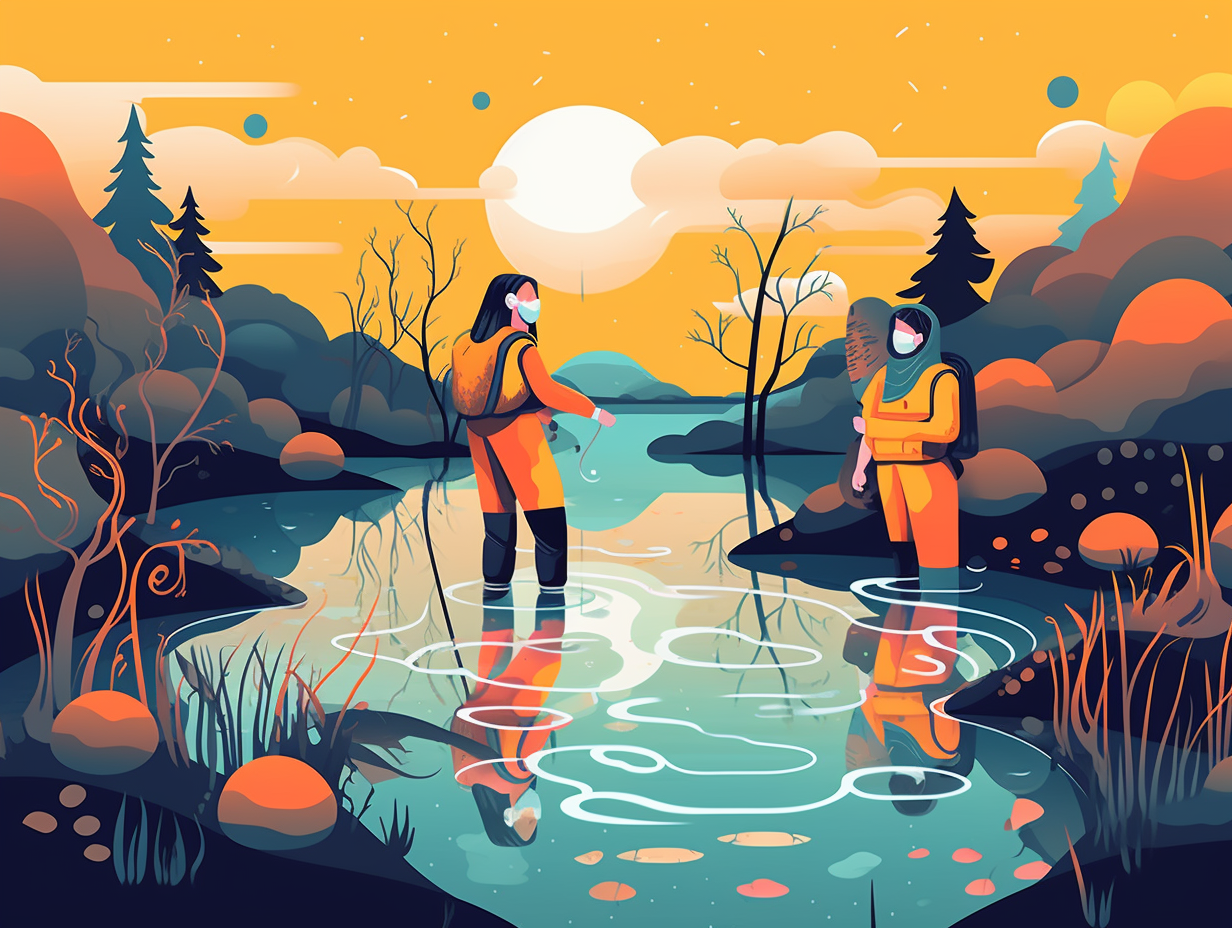Discover the Earth: Top 10 Fascinating and Surprising Environmental Fun Facts You Need to Know!

1. Bee-ware the Pollination Predicament
Here's some buzz-worthy news that might just sting a bit: Bees pollinate a whopping 70 out of the top 100 human food crops, providing us with about 90% of our nutrition. However, these hardworking insects are facing a decline in population, mainly due to pesticides and habitat loss, which could ultimately leave our food supply in a not-so-sweet situation.
Source => greenpeace.org
2. Trees Embrace Personal Space
Trees are throwing a whole new spin on social distancing: they avoid touching their neighbors' branches in a phenomenon known as crown shyness. Just picture a botanical rendition of awkwardly avoiding an ex at a party! The serious reveal: It's especially common among the same tree species, but can happen with different ones too, and it may serve as an insect deterrent or result from "reciprocal pruning" and mutual light sensing. Time to appreciate Mother Nature's comical masterpieces!
Source => en.wikipedia.org

Did you know that global warming could cause sea levels to rise 10 feet, endangering 150 million people and $35 trillion worth of property by 2070? Dive into more surprising facts! 🌊🏙️
=> Fun Facts about Climate-Change
3. Elephant-Heavy Clouds Floating High
Next time you're on cloud nine, just remember you're standing on a herd of elephants, quite literally: An average cumulus cloud weighs around 550 tonnes, equivalent to 100 African elephants, while thunderstorm clouds can weigh as much as 200,000 of them, yet they manage to float majestically due to millions of tiny droplets that fall slowly enough for them to maintain altitude by balancing the updraft from rising warm air.
Source => theguardian.com
4. Aerosols: Environmental Backfiring?
Who needs sunscreen when you've got aerosols? Hold on to your SPF 100, folks: MIT researchers discovered that solar geoengineering methods, like shooting reflective aerosols into the stratosphere to block out sunlight, could actually weaken storm tracks, cause stagnant air and make it harder to clear air pollution, potentially mess up ocean circulation, and threaten the stability of ice sheets. The planet might just prefer we turn down the thermostat by cutting CO2 emissions and other greenhouse gases!
Source => news.mit.edu

5. Oysters' Plastic-Filled Diet Dilemma
When oysters go on a plastic diet: Researchers at the University of Connecticut are examining the types and concentrations of microplastics consumed by oysters and their impact on the marine creatures' digestive processes.
Source => marinedebris.noaa.gov
6. Dung Beetles: The Original Star Navigators
Move over, Star Wars, there's a new navigating force in town: dung beetles are skilled astronomers that use celestial cues to navigate perfectly straight in any direction, even at night. Sensing the polarization patterns of sunlight and moonlight, they can see the Milky Way as a stripe across the sky through their compound eyes; however, urban light pollution threatens their abilities, as it wipes out their natural stargazing and causes them to become disoriented and attracted to artificial lights.
Source => spaceweatherarchive.com
7. Everest: A Trashy Situation
Everest, the ultimate peak for peaky blinders: Mount Everest has transformed into the world's loftiest landfill, as climbers leave behind a staggering eight kilograms of waste each during their ascents, including oxygen tanks, ravaged tents, food packaging, and even their own excrement. This clutter not only mars the pristine beauty of the mountain but also poses health risks for locals relying on the surrounding watershed for their H2O - so come on, people, let's tidy up after our chilly escapades and put a lid on the litter!
Source => nationalgeographic.org
8. Earth's Tectonic Plate Conveyor Belt
When Earth decided to "break up" with Pangaea, it was totally on the rocks: Did you know that tectonic plate motion resembles a giant conveyor belt that moves at a rate of 1.5 centimeters per year, driven by heat from radioactive processes within our planet's mantle? These movements can cause earthquakes and volcanic eruptions while also shaping new land masses and oceans – just like the familiar jigsaw piece relationship between the east coast of South America and the west coast of Africa!
Source => oceanservice.noaa.gov
9. Debunking the Antarctic Ice Expansion
Next time someone tells you Antarctic sea ice doubles the continent's size in winter, just give them the cold shoulder: In reality, the sea ice merely expands from around 3 million square kilometers in February to about 18 million in September, with most of it chilling in the Weddell Sea and only 15% hanging out during winter. So, you see, the Antarctic continent remains pretty much its cool old self – no size-doubling shenanigans here!
Source => antarcticglaciers.org

10. Sunflowers: The Bio-remediation Heroes
Turns out, sunflowers might just have a "dirty" little secret: they're pros at environmental spring cleaning! These bright yellow charmers moonlight as Mother Earth's personal hazmat crew, as they possess the power of phytoremediation: a nifty ability to remove toxic metals like lead, arsenic, zinc, and copper from contaminated soil, water, and air. With a resume boasting gigs like the Chernobyl cleanup, it's safe to say sunflowers are the Batman of botanicals - heroes that work tirelessly behind the scenes to keep our environment safe and clean.
Source => farmersalmanac.com
Related Fun Facts




















